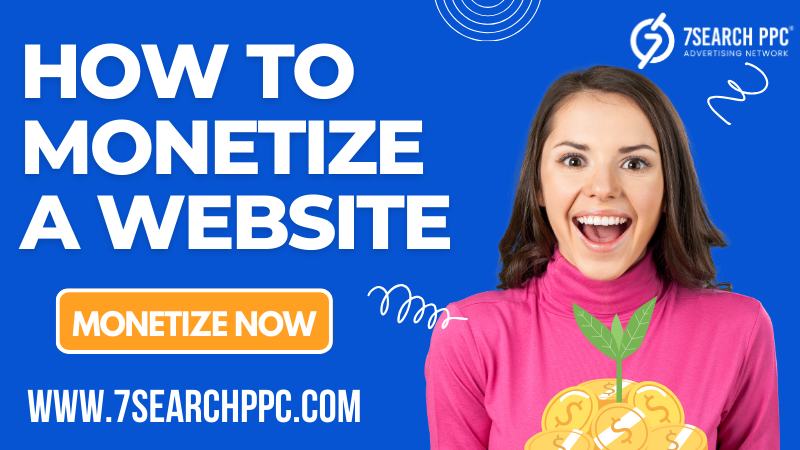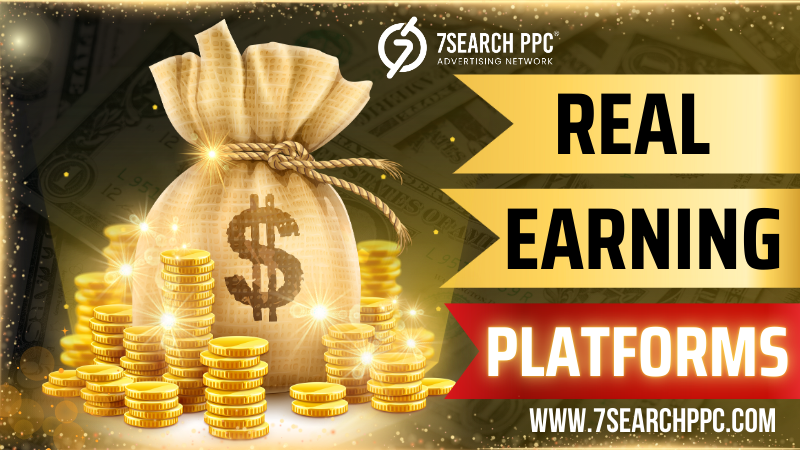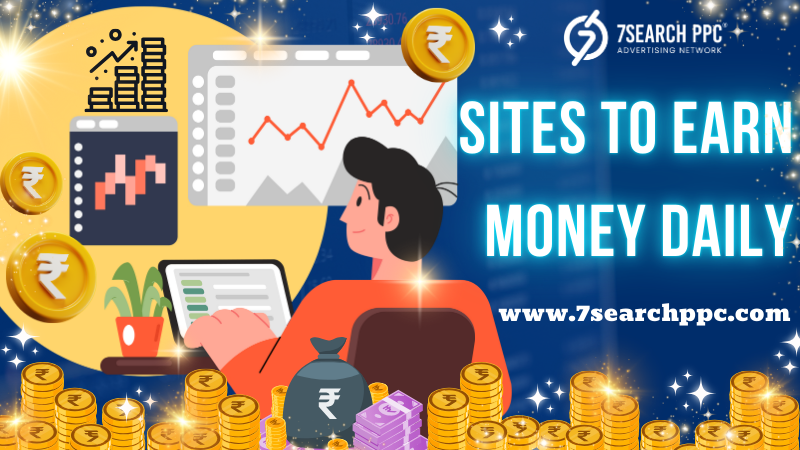Creating an online earnings site is just the beginning. The next big step is to explore reliable ways to monetize your platform. Website monetization allows you to turn your traffic and content into a consistent revenue stream. Whether your site focuses on blogging, affiliate marketing, digital products, or services, implementing a strong monetization strategy is essential. If you're wondering where to monetize website content effectively, especially with ad networks like 7Search PPC , this guide will give you a complete roadmap to success.

Understanding the Monetization Landscape
Before choosing a monetization method, it's crucial to understand your site's audience, traffic volume, and niche relevance. Different monetization models work better depending on your content type and user behavior. Websites with high traffic can earn through display ads, while niche-focused sites often benefit from affiliate marketing or direct product sales.
Choosing the Right Monetization Channels
One of the most important questions to ask is where to monetize your website. Your answer will depend on the kind of content you produce, your traffic sources, and your audience's intent. You can consider monetization through PPC ad networks, affiliate platforms, sponsored content, premium memberships, or even selling digital products. Among all these options, ad networks are the simplest and most scalable solution for beginners.
Why 7Search PPC is Ideal for Monetization
If you're looking for a trusted and easy-to-use advertising partner, 7Search PPC is a great option. This platform allows website owners to display contextual ads and earn revenue every time a user clicks. Its versatility makes it suitable for blogs, e-commerce sites, educational platforms, and content-sharing websites.
7Search PPC offers a wide range of ad formats including text ads, banner ads, and pop-under ads, helping you seamlessly integrate advertising into your site design. Unlike more rigid networks, it supports both high-traffic and niche websites, giving you more flexibility as your site grows.
Setting Up Your Website for PPC Ads
To begin, ensure your site complies with basic content policies. A clean, mobile-friendly design with high-quality, original content is more likely to be approved by ad networks. Sign up for 7Search PPC and submit your website for verification. Once approved, you'll receive ad code to place within your site. Placing these ads in strategic locations—such as in-content, sidebar, and header positions—can increase visibility and boost click-through rates.
If you're wondering where to monetize website traffic for best results, placing ads within content and near user engagement areas is a proven tactic. Ads should be relevant to your content so users feel encouraged to click rather than angry.
Maximizing Revenue Through Optimization
Simply placing ads isn't enough. You need to test layouts, monitor performance metrics, and adjust your strategy over time. 7Search PPC offers an intuitive dashboard that allows you to track impressions, clicks, and earnings. Use this data to make informed decisions on ad placement, design, and content strategy.
The more engaged your audience is, the more likely they are to interact with the ads. Ensure your content remains valuable and well-targeted, as this increases dwell time and boosts your chances of monetizing effectively.
Diversifying Income Streams Without Losing Focus
While PPC ads from networks like 7Search PPC form the core of many monetization strategies, don't hesitate to explore complementary income streams. You can add affiliate links relevant to your niche, promote sponsored products, or offer exclusive content through memberships. However, the key is to maintain a balance so your monetization efforts don't overwhelm the user experience.
If you're actively researching where to monetize website properties for long-term gain, blending various income models is the answer. 7Search PPC can be your foundation, while affiliate offers and sponsored content act as boosters.
Creating Content That Drives Monetization
The success of any monetization strategy relies heavily on quality content. Whether it's tutorials, reviews, guides, or news updates, your content must provide value. The more useful your website is, the higher the traffic, and in turn, the greater earning the potential through ad clicks and conversions.
To attract advertisers and retain visitors, publish regularly and target long-tail keywords. Tools like Google Keyword Planner or SEMrush can help identify search terms your audience is actively looking for. Include the phrase where to monetize website in your content naturally to improve SEO and attract more relevant traffic.
Staying Compliant and Ethical
While monetization is a great way to earn online, it's important to follow ethical practices. Avoid clickbait headlines, misleading ads, or aggressive pop-ups. 7Search PPC has strict guidelines to ensure user safety and advertiser trust. Following these rules not only protects your site but also ensures long-term monetization opportunities.













